VHF/UHF Packet Radio Networking
What was – What could have been
– by Tadd, KA2DEW March 2014
Generally speaking, packet radio is a technology used to send text messages between stations.
Sometimes packet radio is used to send data that is not in the form of text.
The elements all packet radio transmissions have in common are:
- A set of letters or raw digital data sent in a group in a cohesive blast of radio signal;
- A check-data-block is sent at the end of the set of letters to let the receiving station prove that the entire set of letters was correctly received.
Packet radio is used on HF for text messages, and on VHF to carry GPS data between portable equipment and Internet gateways.
This article, however, is about the networks of vhf/uhf packet radio stations, where network means a group of stations having conversations and passing messages within the group.
TNC history
In the early 80s, a club called Tucson Amateur Packet Radio in Tucson Arizona produced a design of a device they called a Terminal Node Controller, or TNC.
TAPR put the unit on the market as a kit and it was sold without a housing.
I believe the housing was also available but I never saw one of those.
I have my own original unit in my plain housing.
This one saw life as a digipeater for a bunch of years as K3LZ-1 in Easton Pennsylvania.
|
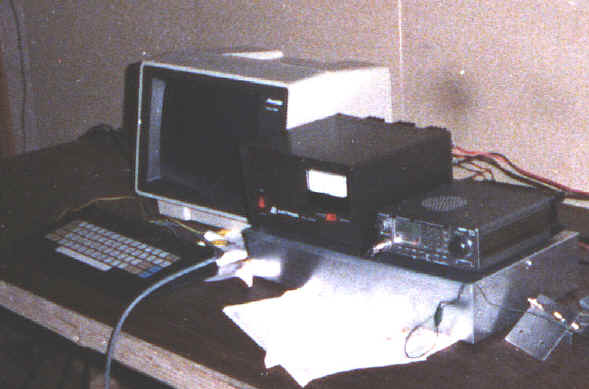
|
1985K3LZ-1 digipeater owned by KA2DEW and K3LZ.
RCA dumb terminal, black and white display, Kenwood TM7950 45watt 2m radio, TNC-1 in plain box |
|
|
The design for the TNC was made available to manufacturers who produced units for profit based on the TAPR design.
Initially TAPR, AEA and Heathkit produced the device.
It sold for around $350, as a kit, and $400 assembled.
Even at that price, the device sold well.
Later, Kantronics made a version of this early design called KPC but they engineered it to be much smaller.
A couple of years later, TAPR released another version of the device they called TNC-2, again as a kit, but this time for about $250 and including a housing this time.
The TNC-2 design was also made available to manufacturers.
This unit was again taken up by various manufactures including AEA, MFJ, DRSI, and PacComm, and sold for approximately $130 in 1990.
TAPR did not invent the TNC. Packet radio was first used over the radio in Montreal in 1978.
The first all-in-one packet device I know about was created by the Vancouver Amateur Digital Communications Group (VADCG) in 1979. VADCG technology showed up in at least the original model TAPR TNC as well.
The very first TNC incorporated a feature called Carrier Sense Multiple Access or CSMA.
CSMA gave the TNC the ability to listen on a channel and judge that the channel was clear or not, before transmitting.
This reduced the chance of collision (where two stations transmitted at once) and message loss.
Since all stations had to be within simplex range in order to participate, this was a fair mechanism.
|
|
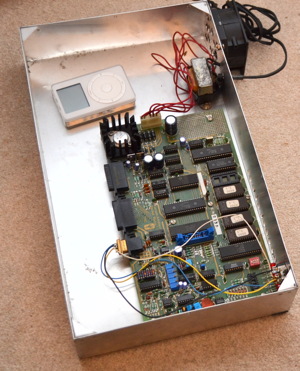
|
Above, 1983 TAPR TNC-1, sold as kit without housing for $350.
Below, 1985 TAPR TNC-2, sold as kit with housing for $250.
The unit in this photo is a second edition TNC-2 with 5 LEDs.
The 1st edition had four LEDs.
|
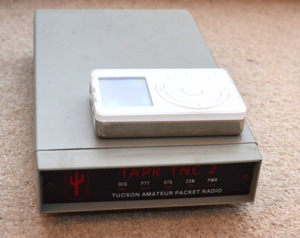
|
|
Packet Radio TNC modes and Digipeaters
Packet radio TNCs can be used in several ways. There are two transmission modes.
The first is called Connect mode.
In this mode, the TNCs on both ends of the connection are told to establish the connection, and then the callsigns assigned to both TNCs will appear in each message.
To establish this connection, one station, let’s say KA2DEW, will originate a call by typing a text command into the TNC, C KA2EIA‹ENTER›.
The TNC automatically sends a connect request out onto the channel. When the sending station unkeys after transmitting the message, the receiving station will check the message, and then acknowledge it.
If the sending station fails to get an acknowledgement, the sending station will send the message again.
The sending station will continue to retry sending the message until the acknowledgement is received, or the sending station times-out having retried 10 times.
If KA2EIA hears one of the messages, his station would print out a message *** CONNECTED to KA2DEW. EIA’s TNC will then send an acknowledgement.
KA2DEW’s station will continue sending connect requests until KA2DEW’s TNC hears an acknowledgement message.
Having heard the acknowledgement, KA2DEW’s station will print the text *** CONNECTED to KA2EIA.
At this point, either end, or both, can start typing text.
When they hit ‹ENTER›, the text is put into a packet, and then sent over the air to the other station.
The two ends of the connection will only see the text sent and received to and from the other station.
It a private connection, from the perspective of the operators.
The other transmission mode provided by a packet radio TNC is Un-protocol, or UNPROTO mode. In this mode, a ham types a message and then hits ‹ENTER›.
The TNC waits for no signal heard on the channel and then puts the radio into transmit and sends the message. There is no assigned recipient.
Any station with a TNC, and within range, who is not involved in a connection, and whose TNC receives an error free message, will see the transmission.
This could be used to have a multi-way round table.
The most common modern usage of UNPROTO mode is a packet radio mode called Automatic Packet Reporting System, or APRS (pronounced ay’-perz).
One feature the TAPR TNC has that I don’t believe was present in the VADCG device is the ability to relay a message through an intermediate station which is called a DIGIPEATER.
DIGIPEATERs made it possible for a packet radio station to transmit a message, and have the digipeater relay the message to a station that is over the horizon.
This gives packet radio the same kind of ability on VHF that only repeaters were capable of before.
However, packet-radio could use not one relay, but up to 8.
Thus
C KA2EIA v K3LZ-1, WB2KMY-1, W2HQQ-1, W1AW-5, KB1H, N1DKF, WB1DZK-2
would result in a connection attempt to KA2EIA in Marlborough Massachusetts from KA2DEW in eastern Pennsylvania, via Easton PA, Beacon NY, Huntington CT, Newington CT, Dayville CT, Cranston RI, and Dudley MA.
Each station along the way, if it heard the message coming in, would wait until the channel was clear from its perspective, then transmit the message down the line.
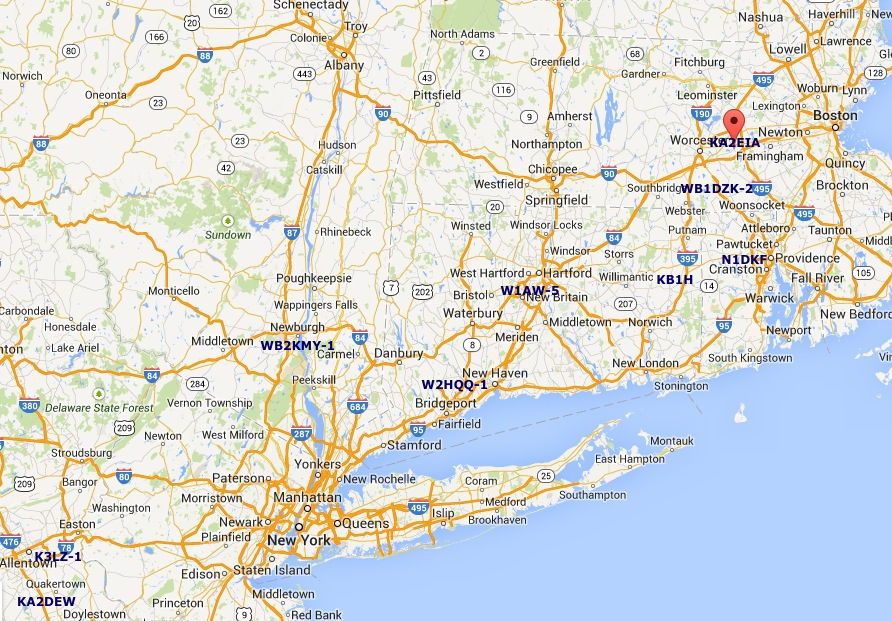
This was the way it was done (when those stations were on-the-air in the mid 1980s.)
To make this work, everybody was on the same frequency.
Each time one of the stations along the line wakes up and transmits, it potentially collides with a message in flight further up the line.
A talks to B when A can’t hear C. But C talks to B when it can’t hear A.
Since A and C are over the horizon from each other (or they wouldn’t need B) then A and C can be transmitting at the same time, which causes B to miss both transmissions.
The congestion and disruption is much like what a multiway FM voice conversation held on a repeater would sound like if the stations talking to the group didn’t listen to the repeater output frequency, but listened only on the input frequency to decide if the channel was busy.
Imagine what the repeater output would sound like.
That’s about how well you can expect packet radio through a digipeater to work.
The TAPR TNC ( and probably the earlier efforts ) transmits from station to station using a rate of signaling that permits 80 characters per second of text to flow from one station to the next.
If two stations are alone on their very own frequency, one station can transmit the entire text of War and Peace between the two TNCs every 13 hours.
But that’s not how the TNCs were used in the 1980s.
The 1980s packet radio user saw between one line of text every 10 seconds, and one line of text once, eventually, followed by an interminable wait and then a failure or disconnect message
Over the Horizon Breaks CSMA
When the TNC was invented in Vancouver, CSMA was a scheme for preventing collisions by making sure the channel was clear before each station transmitted.
This worked because everybody was within simplex range.
TAPR's TNC, taking advantage of AX.25 protocol, included digipeating capability, which enabled over-the-horizon packet radio communications.
This defeated CSMA.
What was done to fix this?
Nothing.
This was and still is a major problem.
We even have a syndrome named after this.
HTS = Hidden Transmitter Syndrome.
See FAQ HTS/ERS for more.
Evolution, Nodes, Services
Eventually, in the 90s, packet radio evolved and digipeaters became more
sophisticated.
The NORD›‹LINK club in Germany, and the RATS club in the US came up with programs for TNCs to improve on the digipeater.
These programs, called TheNET and ROSE, made it possible to have a packet message go into the relay station on one frequency, and come out another frequency.
The relay stations, now called nodes, can receive and acknowledge a connection or text message, and then relay the message seconds later when the other frequency becomes clear.
This means that now stations with traffic to send don’t have to worry about interfering with people in the next county because hopefully the next county isn’t using the same radio frequency.
In the cities it was possible for the frequency usage to be positively cellular, where the node would only have a few miles of coverage.
|
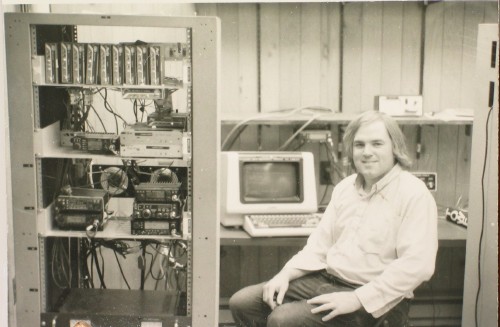
|
1993
KA2DEW at Patterson, NJ packet site.
Eleven TNCs, some with ROSE and some with TheNET, operated under node name PTRSON, ROSE#s 201595, 201977, 201881, callsigns KB2BLX, KA2DEW, N2KBD, N2DZZ with dedicated point‑to‑point links to Little Falls, Little Ferry, Astoria, Sussex, two zoo channel 2m user ports, one CROWD conference bridge, and a local Terminal.
|
|
Service applications were written for PCs to enable bulletin board functions, email, Dx spotting, and electronic callbook access, antenna design programs and other features, all accessible over packet radio.
TheNET, an open source program and protocol, was implemented in a dozen different forms including NET/ROM, G8BPQ, MSYS.
For the first time hams became exposed to what internetworked computers could do for them.
Through the continent wide network of bulletin boards we could now read and write on-line used equipment sales, ham radio news, satellite tracking information, help files, email, and other material.
All of this was tailored to ham radio interests (unlike the telephone BBSs of the day) and were free for access to hams.
It was very exciting.
Hams could leave their packet stations on the air for 24 hours a day, giving the ability to monitor a server (like a Dx Spotting system) continuously all day long.
You could use it like a pager in that a friend could connect to you to see if you were available, make a schedule to move over to HF or a repeater.
In addition, people who really loved having radios do their bidding for communications had an unmatched opportunity to string dozens of radios together to do text communications over a greater range than even the largest of Amateur Radio repeater networks.
Cost of packet technology in the 1990s
A 1995 style packet radio station was usually built starting with an existing 2 meter radio and computer.
Those cost $300 and $1300 respectively.
The TNC was the only add-on portion and that would cost about $130 in 1995 dollars.
Most packet radio stations were left on only part of the time.
A packet station meant for full-time use would need its own radios, but would still share a computer.
A network node cost about $450 per channel, or about $900 for a 2 port or $1350 for a 3 port.
This dollar figure is discounting coax and antenna.
With antennas and coax but not counting tower or other mounting hardware a 3-port node would cost about $1600.
Most network nodes were at commercial radio sites or at ham stations where a decent tower and location was available.
A server station like a BBS would cost about $2100 plus coax and antennas if done with a new cheap computer, or $1600 if done with a used nearly free computer (but with minor upgrades to make things stay working).
Packet didn't work very well in most places
Packet radio didn’t come out looking very good.
There was a huge amount of promise but very few efforts to fully manage packet radio so that that every user had a good experience.
Even in places where packet radio was well used, all of the packet stations used timing values and assumptions of congestion to slow their own performance down lest chaos ensue at every operation.
While network node technology could easily enable local coverage user-access node ports and high performance backbones between the nodes, this was usually not what was done.
Networks were built ad-hoc by having newcomer network sites add to the network without adding additional node ports to support the new addition.
Typical network connectivity had variable performance from War and Peace levels as described above to completely unworkable or stopped, depending on traffic load, usually with the high performance available during several minutes at around 4am and completely useless for most of the day.
User access portals were placed in high locations where they would hear so much traffic that the node would never be able to transmit.
The node-blocked-by-receive-traffic issue impacted both home to node traffic, and node to node traffic.
Most packet systems that did attract users suffered frequent (several times per hour) overload conditions leading to almost all stations using the affected backbone being disconnected, losing any partially completed missions (emails, postings, etc).
Basically, it did not work well.
Death of Packet networking
In the late 90s and early 00s the Internet became available to most Amateur Radio operators.
All of the services provided by packet radio, including text messaging and the rest, were now available without any of the delays and network failures associated with packet radio.
On the other hand, packet radio services, including all of the previously mentioned computer systems and nodes, could now exchange traffic over the Internet, eliminating the failures caused by bad network design and congestion on backbones.
Stations which did not yet have Internet access could be entertained by packet radio, which was much faster than the packet radio of the 90s, due to the reduction in on-channel congestion (everybody went away) and the instantaneous nature of the Internet "backbone".
On the other hand, because of the new connectivity the server stations had over the Internet, the volume of available traffic now automatically sent from server to server over the packet network assumed Internet proportions, decimating the users attempting to use the remaining packet networks to do long distance over-the-radio DXin and to take advantage of the uniqueness of packet radio for long distance VHF/UHF radio communications.
Eventually, by 2010, packet radio networks using radio are almost all gone.
There are only a few islands of any VHF/UHF packet-over-radio networks.
APRS, with its 1980s style digipeaters (albeit with some modern improvements) is all that is left.
APRS is a system for reporting the position of a mobile station, via radio, to the nearest Internet gateway where the information is aggregated for display on the APRS.FI web page.
Nowhere in the US are there packet networks of more than a couple of radio hops.
Why bother building a network node to tie two regions together when both ends of the network are connected to Internet anyway? Just like in Echolink, IRLP, Wires and D-Star, you can use ham radio to talk to other ham radios, with the entire Internet in between.
Radio to radio to radio to radio hopping with packet radio has gone away.
It did work well in other places, but it died anyway
There were several efforts in the world that successfully implemented modern packet radio technology (for the 90s).
This created a good environment for packeteers, giving access to multi-state round table chats, remote access to unique services over hundreds of miles, text to text conversations across a population of nearly 100 million (i.e tens of thousands of hams), involving hundreds of full-time-up packet radio nodes.
These efforts died when 80% of active hams abandoned the hobby. When the networks died, the remaining pieces were quickly hooked to the Internet, removing the need to reconnect the network pieces together again.
What did we miss?
There are several features of packet radio networking that were attractive to ham radios operators.
Usually each feature would attract only some of the community, where each ham would find at least one element interesting.
- email
- document sharing
- Dx and satellite information exchange
- data protocols, computer to computer communications
- ham to ham paging and text messaging
- computer control of radios
- digital network analysis and configuration
- radio modification, radio operation
- camaraderie with like minded people
- vhf site to site linking, radios, antennas
- large radio networks
- radio remote control of systems
- emergency communications and commercial system independence
Some of these capabilities are now available to hams using the Internet.
Some are not.
The ones that are not performed using the Internet are still interesting.
There were several capabilities we thought packet radio would provide which have not happened, at least not for ham radio.
- digital trunk radio - PTT cellphone
- ham radio operator proximity based systems, i.e. who is near me now?
- wearable text messaging and social apparatus (enabling use of tiny displays, pocket morse input, portable keyboards etc)
- mobile local relay -- use car equipment to relay man-portable equipment into wider network
It is interesting to note that cellular telephone services provide many of the portable capabilities and user-following capabilities that we were doing with packet radio.
However, cellular phone units are generally only affordable because of high levels of integration.
That integration limits our ability to custom tailor the operation to our own needs.
For instance, we can't use an iOS or Android portable in a system which lets us
- build our own cell sites,
- use the car to relay our messages,
- make simplex calls between two devices,
- monitor local traffic
- determine network congestion, available sites
- create coverage maps based on system performance verses location for individual repeater sites
All of these capabilities would be easy if we were using ham-radio-grown terminals.
15 years later, Hams doing packet again?
15 years after packet radio died, there are quite a few differences in ham radio itself and in the costs of technology that are relevant to packet radio.
The ham radio population has more people interested in radio for radio’s sake.
While we lost hams to cellphones and Internet, we gained hams who are coming into it for the radio aspect.
Code-free licensing could be very good for packet radio.
The Internet is available to almost everybody, so packet radio doesn’t have to serve the role of last-mile-access to the Internet.
Packet radio equipment is much cheaper.
Stand-alone TNCs (connect via USB to a laptop) can now be had for $60.
A packet node or server can now be run on a computer that costs as little as $50.
The TNCs for a 3 port node are about $120.
Radios can be found on the used market for $70 for surplus commercial, or $130 for used ham gear.
The Raspberry PI would have been as futuristic as a warp drive in the 1990s.
Just fantastic.
A new plan
I’m writing this article because I have become inspired to make a packet network.
I want to see the radios running again and the messages going over the horizon.
Even at 80 characters per second, our packet radio experience will be much better than in the 90s.
We don’t need to compete with the Internet.
We can come up with applications the Internet can’t do and can own our own infrastructure.
I have a plan to implement a dozen or so stations, linked together with collision free technologies, and eliminate congestion and network timeouts altogether.
I wrote an installation package to take a Raspberry PI and turn it into what was once a $1600 packet node, for about $170, and turn every user station into a network switch, promoting expansion of the network and giving every participant a stake in the game, as well as giving every participant a high performance connection.
My installation package is less painful than almost anything on MSWIndows.
If you once wished you had been in one of those places where good packet networks existed, you win, because now you are.
|
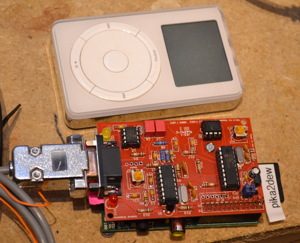
|
2013
TNC-PI mounted on Raspberry PI. $40+$50
|
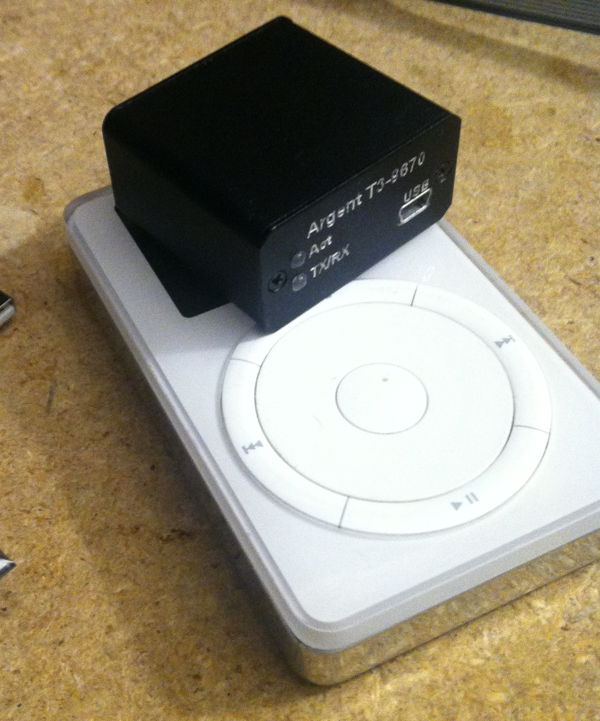
|
2014
Argent Data Radio/TNC. This is a 750mW 9600 baud radio modem. USB in the front, SMA connector on the back. $72.
|
|
I’m calling it Terrestrial Amateur Radio Packet Networking — TARPN.
Thanks for reading. 73 de KA2DEW
March 2014
With editing help by Simon, VE7SXS
|